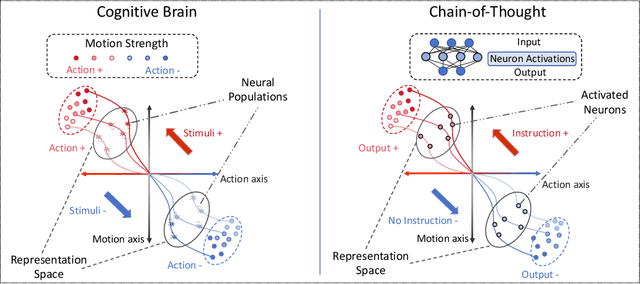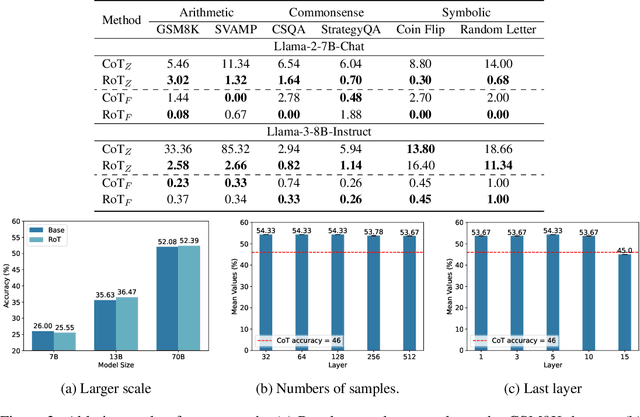Understanding Reasoning in Chain-of-Thought from the Hopfieldian View
Paper and Code
Oct 04, 2024



Large Language Models have demonstrated remarkable abilities across various tasks, with Chain-of-Thought (CoT) prompting emerging as a key technique to enhance reasoning capabilities. However, existing research primarily focuses on improving performance, lacking a comprehensive framework to explain and understand the fundamental factors behind CoT's success. To bridge this gap, we introduce a novel perspective grounded in the Hopfieldian view of cognition in cognitive neuroscience. We establish a connection between CoT reasoning and key cognitive elements such as stimuli, actions, neural populations, and representation spaces. From our view, we can understand the reasoning process as the movement between these representation spaces. Building on this insight, we develop a method for localizing reasoning errors in the response of CoTs. Moreover, we propose the Representation-of-Thought (RoT) framework, which leverages the robustness of low-dimensional representation spaces to enhance the robustness of the reasoning process in CoTs. Experimental results demonstrate that RoT improves the robustness and interpretability of CoT reasoning while offering fine-grained control over the reasoning process.
 Add to Chrome
Add to Chrome Add to Firefox
Add to Firefox Add to Edge
Add to Edge